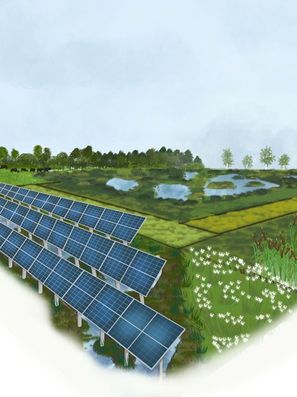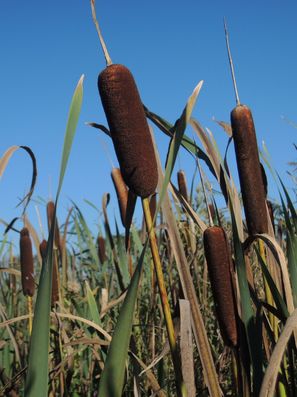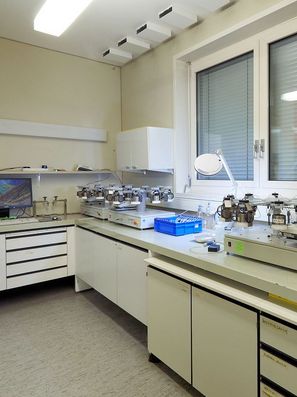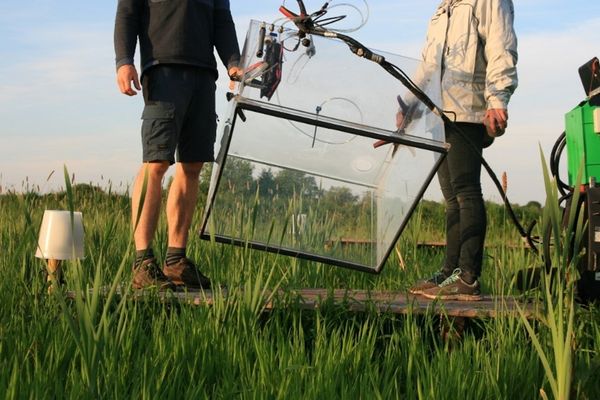Contact: Bärbel Tiemeyer, Ullrich Dettmann, Stefan Frank and Arndt Piayda
Living mires are the only ecosystem that can remove carbon dioxide (CO2) from the atmosphere over thousands of years and accumulate it as peat. However, such peatlands are very rare in Germany, as the majority of sites have been drained and can only be recognised as former peatland ecosystems by taking a closer look at the soil. When peatlands are drained for agricultural or forestry use or peat extraction, more oxygen enters the soil. Under these conditions, microorganisms can efficiently decompose the peat which produces large quantities of CO2.
The Federal Climate Change Act (2021) demands that the land use, land use change and forestry (LULUCF) sector will be a sink of 40 million tonnes of CO2 equivalents by 2045. Greenhouse gas emissions from drained peatlands are mostly reported in this sector.
According to the Target Agreement between the Federal Government and the Federal States on Climate Protection by Peatland Protection and the National Peatland Protection Strategy, the current greenhouse gas emissions from organic soils of 54 million tonnes of CO2 equivalents are to be reduced by 5 million tonnes of CO2 equivalents by 2030. Both require not only considerable efforts in the rewetting of peatlands, but also an assessment of possible mitigation measures based on a sound scientific understanding and adequate monitoring.
Accordingly, our research addresses both the status quo and various approaches to reducing greenhouse gas emissions, such as water management on agriculturally used peatlands, paludiculture and restoration. In addition, the German Peatland Monitoring Programme for Climate Protection (MoMok) (Open Land) is currently being set up. Our projects are particularly interested in the interaction of soil hydrological and chemical properties, water management and the exchange of CO2, methane and nitrous oxide, using laboratory experiments, field measurements and modelling approaches at different spatial scales.

German peatland monitoring programme (MoMoK) – Open land
The aim of our peatland monitoring is to investigate changes in soil organic carbon stocks, drivers and mitigation measures throughout Germany. Further, we aim to improve data sets regionalisation approaches for emissions reporting.

Roadmap for the rewetting of organic soils in Germany (RoVer)
In the interdisciplinary project, we are investigating how the agreed climate protection targets can be achieved through different peatland rewetting measures in Germany.

Water management at grasslands on peat
In several projects, we are and have been investigating how increasing the groundwater level through subsurface irrigation and ditch blocking affects the greenhouse gas emissions and the water quality of intensively used grassland.

PaludiZentrale
As the PaludiZentrale, we are – together with the Greifswald Mire Centre – establishing a network between demonstration projects working on the implementation of paludicultures. We will ensure the uniformity and comparability of the collected data, conduct synthesis studies and develop recommendations for practitioners and politics.
Read more (soon)

Bog paludicultures
We analyse and evaluate the contribution of Sphagnum (peat moss) farming to biodiversity and climate protection and how these paludicultures can be successfully established and optimised even under challenging conditions.

Fen paludicultures
Fen paludicultures are diverse and comprise e.g., wet grasslands, reeds and cattail. We measure and model how emission reduction, nutrient retention and biomass yields can be optimised in fen paludicultures.

Effects of vascular plant encroachment on rewetted bogs
We investigate how changes in species composition on raised bogs affect stand precipitation, evapotranspiration, gross primary production, respiration, the CO2 balance and the carbon sink function of the soil.

Lab for soil physics and peat
In the peat laboratory, soil physical parameters are determined on both undisturbed and disturbed mixed samples. The focus of our lab is the development of methods specifically optimized for peat soils.
Further finalized projects
- SOC-Sand - Stability of organic matter in sand mixing cultures
- Application-oriented carbon budget modeling of organic soils
- Monitoring groundwater levels in peatlands with radar data
- CAOS - Climate Smart Agriculture on Organic Soils
- Peatland Protection in Germany
- Water quality in bog peatlands in Lower Saxony (Germany)
- Joint research project 'Organic soils'

![[Translate to English:] [Translate to English:]](/media/_processed_/6/4/csm_titel_CO2Kampagne8_afeea2273e.png)
![[Translate to English:] [Translate to English:]](/media/_processed_/4/1/csm_titel_93px_CO2Kampagne8_9b0f3354d4.png)





